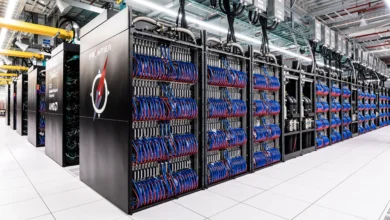
3 Myths About Your Car’s Environmental Impact
Muncie, Indiana Blog – These days, almost everyone wants to be a bit greener, although the largest contribution to most people’s carbon footprint is their car. But good intentions don’t always lead to the best outcomes. Rather than just going along with the latest trends, people should ask themselves a few questions, including:
- Is keeping your old car a “greener” choice than buying a new electric vehicle?
- Will inflating your tires a little bit more improve fuel efficiency?
- Can driving techniques really make that much of an environmental difference?
The answers might surprise you. To help clear up common misconceptions — and help us all do our part to combat climate change — take a look at a few of the most prevalent myths out there today.
Myth 1: Going Electric is the Best Thing for the Planet
Most people mean well when they purchase a hybrid or electric car. In a philosophical sense, they’re correct. Indeed, if all vehicles were electric, there would be much fewer carbon emissions being pumped into the atmosphere. But, at the same time, the energy that goes into manufacturing these cars is substantial.
And this can mean that, on balance, buying a new automobile before your current vehicle has run its course isn’t environmentally friendly. Case in point: “Making a new car creates as much carbon pollution as driving it,” according to a report from The Guardian. “So it’s often better to keep your old banger on the road than to upgrade to a greener model.”
Of course, if you sell your current vehicle to someone on the used-car market, it will likely be sold and continue to be driven on the open road. Then again, the trend of rapidly disposing of and buying new automobiles would be completely alien to our grandfathers.
Ultimately, electric cars are the future — but don’t rush it. Start trying to get as much longevity as possible out of your vehicle. If everyone did the same thing, the entire industry would produce fewer cars, and there would be less scrap metal piling up in junkyards around the world.
Myth 2: Every Car Model has a Specific Fuel Efficiency
While each car and model has a reputation for its miles-per-gallon bonafides, the actual efficiency you get out of a vehicle depends on various aspects. For example, one rarely discussed factor that affects fuel efficiency is tire pressure.
Of course, it makes sense that vehicles with properly inflated tires perform better on the road and conserve energy. At the same time, they also allow for safer driving, which helps prevent accidents and fender benders that require additional resources in the form of maintenance.
This goes for other integral car parts as well. By regularly replacing your car’s spark plugs, air filter and mass air flow sensor, it will operate better and require less fuel. Though the difference may seem small, these little things do add up.
And best of all, the more efficiently the car runs, the less wear and tear there will be on the engine and overall structure of the vehicle — which means it will last longer and keep you from putting a new car on the road.
Myth 3: There are Only Two Types of Driving – City and Highway
Even more than maintenance, the manner in which you drive can greatly influence fuel efficiency. In fact, a cult of sorts has emerged amongst certain drivers, who try to push it to the limit and get the most miles per gallon possible out of their rides. While going to these extremes is the car equivalent of running an ultramarathon, everyone can make some small adjustments and help ensure they fill up the tank less often.
With that said, the best technique is to go easy on the gas pedal. Don’t floor it; instead, accelerate more gradually. Then, as you’re cruising, keep your speed steady. If you find yourself using the brakes frequently, ask yourself if this would be necessary if you were moving at a more consistent speed.
Another simple change most people can make is to lay off the fast-gas-pressing while driving in traffic. Indeed, you won’t get very far — quite literally — when attempting to get up to 30 mph for only 100 feet, only to then quickly decelerate to 5 mph.
Fact Over Fiction
Maintaining a positive environmental impact requires knowledge and discipline. It isn’t enough to merely follow and adopt the latest trends. Instead, use a little bit of forethought and make sure the efforts you’re making are fruitful.
Moreover, consider whether going electric is really the best move for you, keep your car operating as efficiently as possible, and alter your driving style so your car uses less fuel. No one person can make a major difference all by themselves. But if we all start using a little more common sense, things may start to improve on the environmental front — before it’s too late.






